Club Allard began as a private club in 1998, but in 2007 opened its doors to the public. Its head chef is Diego Guerrero, who gained a Michelin star for the restaurant in 2007 and a second one in 2011. He is from the Basque region, and trained at Martin Berasategui. Club Allard is on the second floor of a handsome 1908 building in central Madrid. If, as I did, you arrive at the unfashionably early hour of 9 p.m. you may find the imposing doors of the building firmly shut, but eventually a kindly and slightly bemused passing local found the appropriate buzzer to summon a doorman to open up. The dining room is up a flight of stairs and is very grand, with high ceilings, widely spaced tables with crisply ironed white linen tablecloths, chandeliers and thick carpet.
There was no a la carte menu. Instead three tasting menus were offered, entitled "rendezvous" (nine courses for €86) "seduction" (11 courses for €98) and "revolution" (12 courses for €115). No clues there then, but at this point the diner may infer that traditional Spanish cooking will not be the order of the day. The 35 page wine list was mostly, but not entirely, Spanish, with wines such as Imperial Gran Reserva 1999 at €51.21 for a wine that you can find in a shop for €29 and Hacienda Monasterio 2006 at €71.32 for a wine that retails at around €37; Unico 2000 was €332 for a wine that costs €219. I drank the very enjoyable Pintia 2006 from Vega Sicila at €58.69 for a wine that retails at €37.
The chef came round to ask about dietary requirements and then we were off, the dishes arriving at a gallop. Peanut salsa appeared first, a little printed menu card on the table turning out to be an edible crisp (very Mugaritz). The little card tasted pretty much exactly as I imagine cardboard tastes if you try and eat it, so in this case I was far from convinced that the molecular tricky really worked. The peanut salsa was not overpowering, but this was not a dish that I would choose to have again.
This was followed by a much more enjoyable dish of Spanish truffle with foie gras and shredded venison, served over a base of tomatillo smoke that was released when served, the foie gras tasting properly of liver but not overwhelming things, nor too smoky. For me this could benefitted from an extra dish element to balance the richness, but it was otherwise a carefully made and enjoyable dish (17/20).
Bread was a choice of rolls: white, tomato, olive, all with good texture (17/20). The next dish was caviar cream with a "caviar leaf" and a topping of caviar. I was unconvinced by this in terms of balance, the saltiness a little too strong though the caviar cream was enjoyable (14/20). Better was a culinary joke: "Babybel", the red supermarket cheese. In reality this had a coating of beetroot but inside was high quality Camembert flavoured with truffle, served with a savoury tuile. This had excellent flavour, the rich cheese nicely matched by the thin beetroot layer, an example of modern technique where the effect actually added an effective flavour balance rather than just being clever (17/20).
Next came a Japanese influence. Butterfish was placed on top of a thin seaweed tuile, over a soup described as sukiyaki. It was really a vegetable consommé (sukiyaki is a hotpot) but it had clean flavour and tasted of dashi. The seaweed crisp was delicate and easily broken as a dip for the soup,,while the butterfish had good flavour. I am not sure how Japanese this really was, but the taste combination was effective (16/20).
This was followed by a soup of chanterelles and vegetables from Navarra, served on papilotte on a bed of hot stones, the casing cut open at the table. This seemed to me a case of style over substance. Take away the bed of hot stones and the theatre of cutting open the casing and you are left with a vegetable soup, which could have been served hot anyway without the drama. The broth lacked intensity, though the chanterelles themselves were excellent and the vegetables fine (14/20).
Salmon cheek was smoked and served in a bouillon of saffron with a little sea urchin and baby broad beams, garnished with "coconut air" and banana crab crisps. The salmon itself was very good, the bouillon tasting of saffron but without the metallic tang that this ingredient can bring, though the coconut air evaporated as far as I was concerned, and the sea urchin was subtle to the point of invisibility. The banana crab tuile was a curious garnish that did not taste very strongly of either main component (16/20).
This was followed by a dish of egg with bread served over a potato cream sauce with pancetta. The egg itself had excellent flavour, and the potato cream was good, but the pancetta flavour was missing in action (16/20). Turbot was served with spring onion and basil perfume. This was a surprisingly classical dish, the turbot carefully cooked, the spring onions in the sauce nicely judged, the basil flavour mercifully subtle, the stock a little watery (16/20). The best dish of the night by some margin was pigeon (from Bresse) roasted and served over truffled rice which had been cooked in a mussel broth. The pigeon itself had superb flavour, served with excellent assorted wild mushrooms (18/20).
A rather odd course followed, frozen cucumber cylinder with Hendricks gin and tonic flavoured with rose petals. Although refreshing enough, I was far from sure of the wisdom of mixing gin and cucumber. This was pretty but for me not a great dish. Next was a dessert "fishbowl", where the "mussels" were really dark chocolate, white chocolate provided a crunchiness and raspberry was the "coral". Finally, a poached egg was of course no such thing. The eggshell was made of chocolate, encasing "egg white" made from coconut and "egg yolk" from mango, the egg served with salsify crisps. I actually enjoyed this dish. Ignoring the trickery for the moment, the flavours of mango and coconut balanced the richness of the chocolate nicely. Moreover the little play on the egg was fully developed, as when you broke the chocolate shell it really did look like a poached egg inside. In this case the molecular trickery did not come at the expense of flavour (easily 17/20).
A range of high quality teas and coffees were offered, served with a plate of petit fours including a sugar Buddha, meringue with raspberry, plum cake with cinnamon and a rather theatrical flourish of dry ice. The bill came to €162 (£129) a head, albeit with a full bottle of nice wine. This is clever molecular gastronomy, which is far from my favourite style of cooking, but nonetheless I had to admire the high level of skill here. While some of the flourishes were not original, the flavour balance of dishes was generally good, and the culinary technique was precise. Service was excellent, staff friendly and efficient.

-
 room
room

-
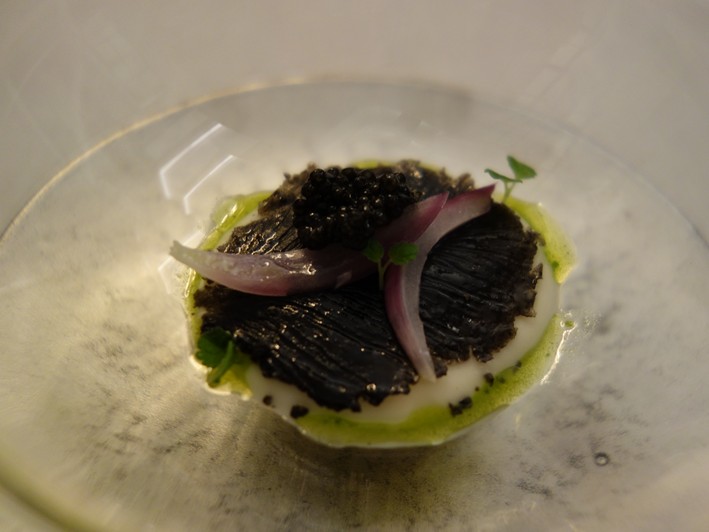 caviar
caviar

-
 cucumber
cucumber

-
 egg
egg

-
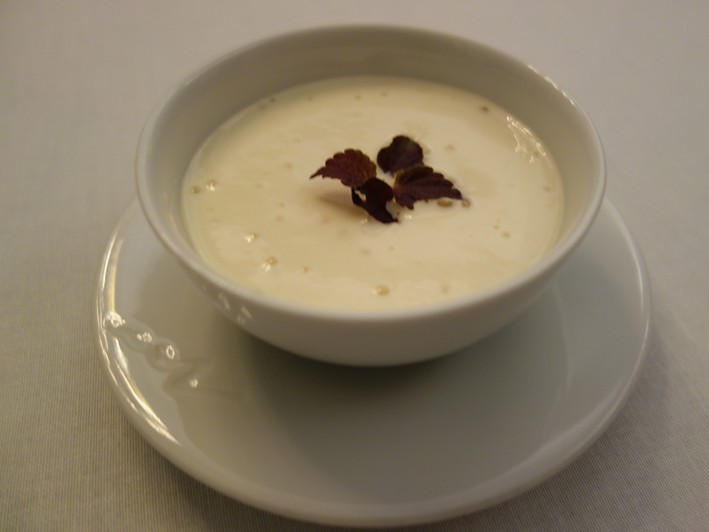 peanut mousse
peanut mousse

-
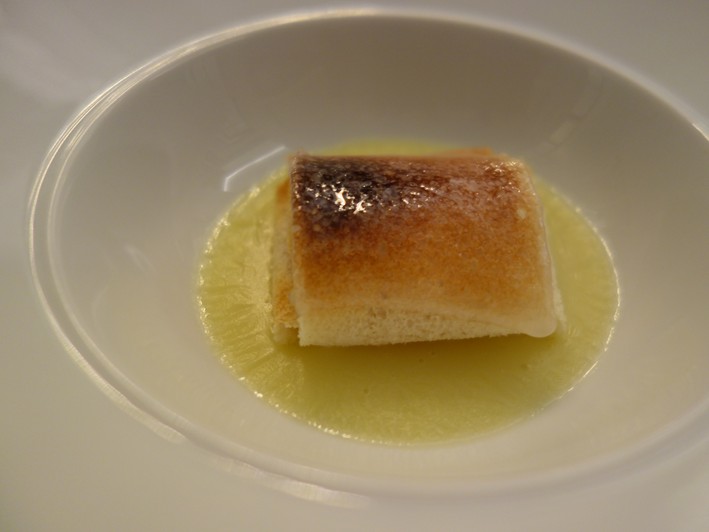 potato
potato

-
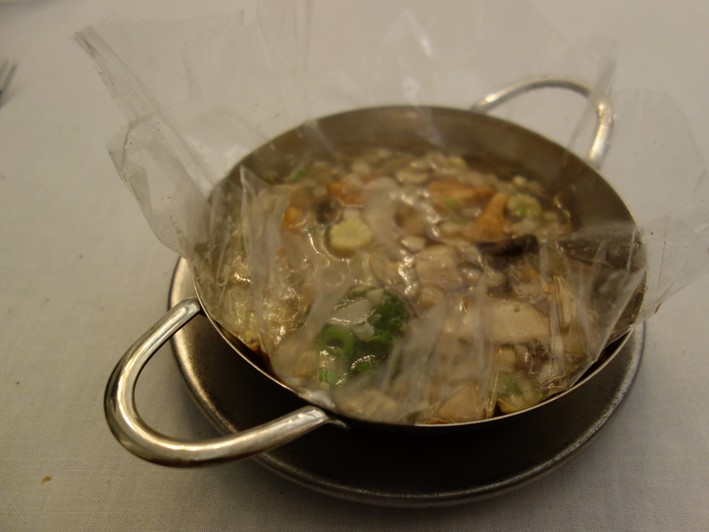 soup
soup

-
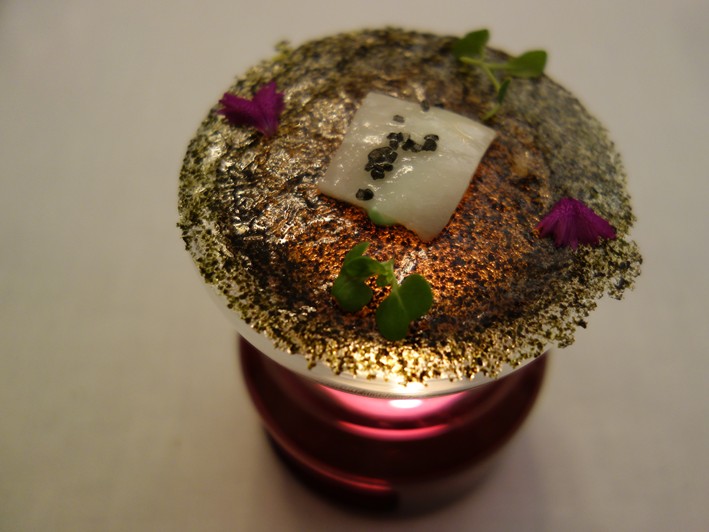 seaweed
seaweed

-
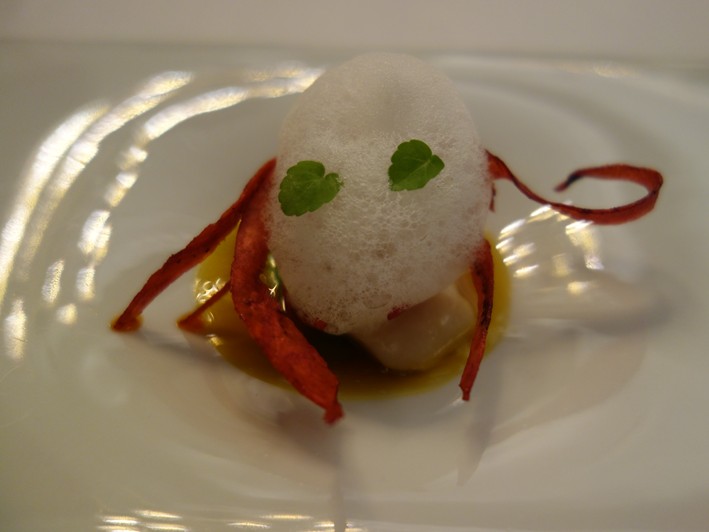 salmon
salmon

-
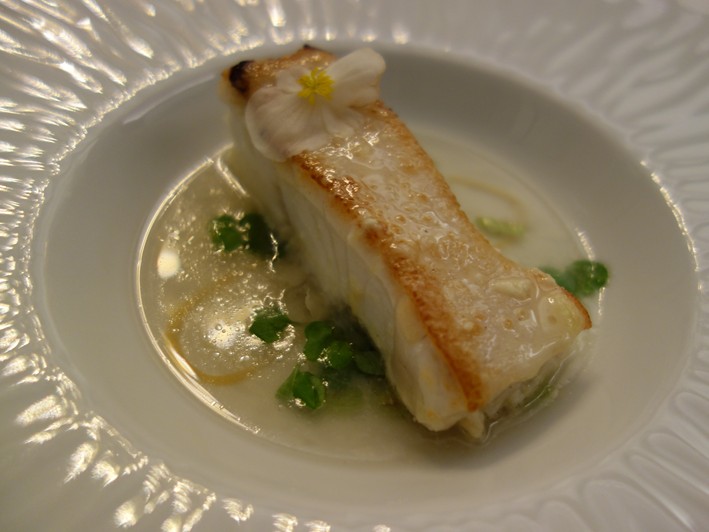 turbot
turbot

-
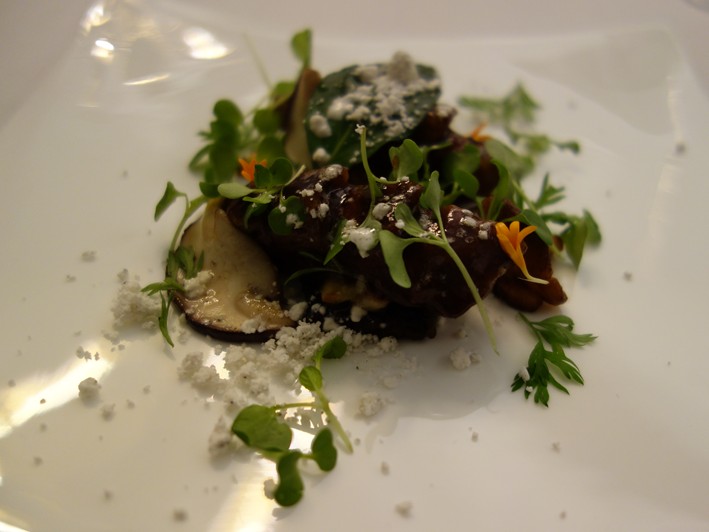 pigeon
pigeon

-
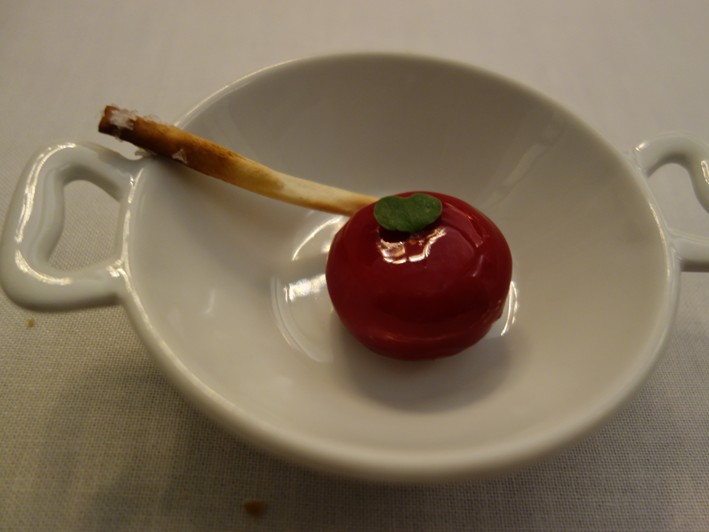 cheese
cheese

-
 chocolate fishbowl
chocolate fishbowl

-
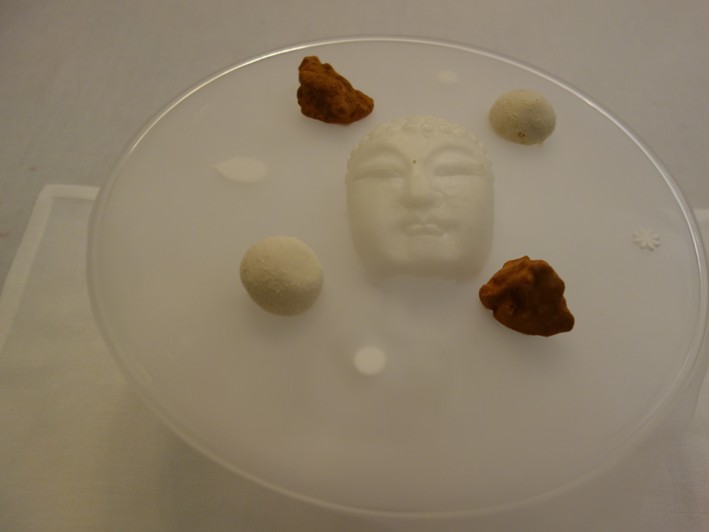 petit fours
petit fours

-
 chef
chef

Spanish cuisine
 Average Price £110
Price I paid £129
Value for money
££££££
Overall rating 16/20
Michelin star
Average Price £110
Price I paid £129
Value for money
££££££
Overall rating 16/20
Michelin star

The type of cuisine served at this restaurant
Typical price for three courses and modest wine
What I actually paid on this particular visit
Calculated from overall rating/average price: £££££ is best, £ least good
Score for the food from 1 to 20, with 20 being world class
Currently has at least one Michelin star
















Add a comment
Thank you for submitting your comment, this will be checked and added to the website very soon.
User comments